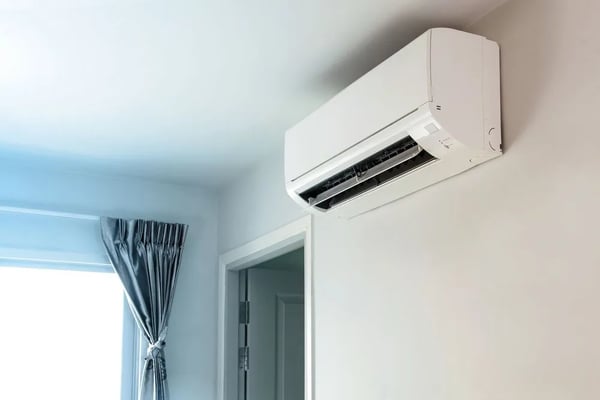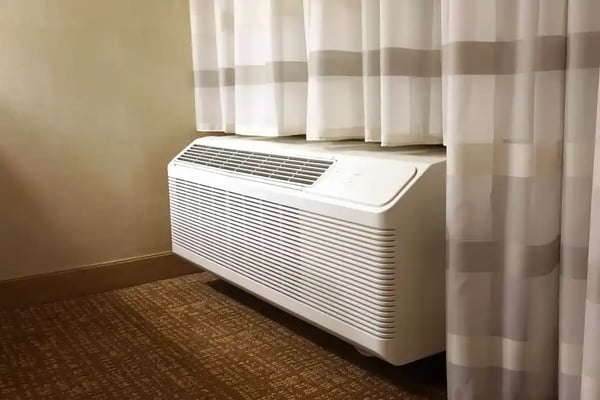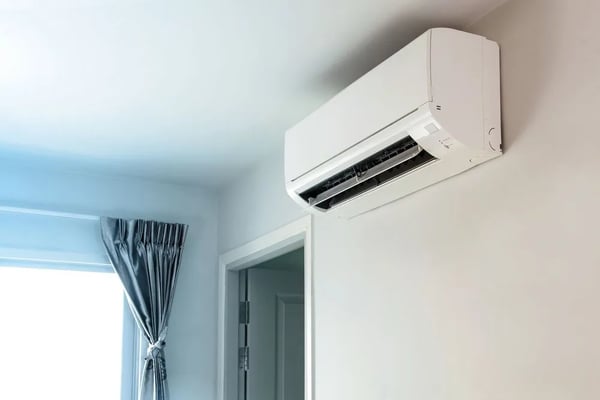Packaged terminal air conditioners and mini-splits have similar applications. Both are unitary systems, meaning they are designed for individual areas rather than entire floors or buildings. PTACs and mini-splits can operate independently of each other, which makes them a practical solution for construction areas with different schedules.
Depending on the needs of each project, both units are available as air conditioners only or as reversible heat pumps. In either case, a heat pump eliminates the need for separate heating and cooling. When they are reversible, PTACs are called terminal packaged heat pumps (PTHP).
PTACs are very common in hotel rooms, and you can also find them in commercial offices or apartments. Mini-splits are also suitable for these applications and are generally very adaptable. This article will compare PTACs and mini-splits, based on the advantages and limitations of each system.
Get professional HVAC design for your project.
Advantages of Mini-Splits over PTACs
The main advantage of mini-splits is energy efficiency. While a PTAC requires a large opening in the wall for the entire unit, a mini-split uses only a small opening for refrigerant lines between the indoor and outdoor units. Because a mini-split creates a much smaller gap in the building envelope, it can achieve greater efficiency.

The most efficient PTACs have an energy efficiency rating (EER) of around 12 in cooling mode, while there are mini-split units with an EER greater than 15. In this case, you can expect electricity savings of over 30% with the mini -split. . The difference in efficiency is less drastic in heating mode, as you can find both PTHPs and mini-splits with a coefficient of performance (COP) above 3.
Mini-split units are also easier to install as they utilize a smaller wall opening compared to PTACs. A mini split uses two smaller units, installed indoors and outdoors, while a PTAC is a bulky packaged unit that is more difficult to handle.
Mini-splits are also more adaptable as you can install the indoor unit on any wall and there is no need to match the position of the outdoor unit. On the other hand, PTACs and PTHPs can only be installed when an opening in the exterior wall is possible. A mini-split also produces less noise, as the compressor is contained in the outdoor unit, isolated from the conditioned space.
Advantages of PTACs over Mini-Splits

The main limitation of mini-splits is that they do not have air ducts between the indoor and outdoor unit, since there are only refrigerant lines. As a result, they can provide heating and cooling but not ventilation. On the other hand, a PTAC or PTHP can perform all three functions. When a building uses mini-splits, separate ventilation is required to meet building codes and ASHRAE standards.
For a given capacity, a PTAC typically has a lower price than a mini-split, and this is an advantage when the project budget is limited. However, energy efficiency must also be considered, and the extra cost of a mini-split is often recovered as energy savings.
PTACs also have simpler maintenance requirements than mini-splits. Homeowners can simplify property management and maintenance by using PTACs if they don't mind their higher energy consumption.
Conclusion
Mini-splits and PTACs are useful when you need independent HVAC for different areas of the building. For example, a centralized refrigerator and boiler may not be the best option for hotel rooms or individual offices used by independent professionals. Each area has different operating hours in this case, and centralized HVAC can waste a lot of energy. On the other hand, unitary systems such as PTACs and mini-splits provide versatility to heat and cool each area independently.
- Mini-splits offer greater energy efficiency, simpler installation, versatility and comfort thanks to their silent operation.
- PTACs offer integrated ventilation, lower initial cost and simpler maintenance.
HVAC accounts for more than 50% of energy consumption in many buildings and its performance has a major impact on indoor air quality. A professional HVAC design can maintain ideal temperature and humidity for occupants while optimizing energy consumption. Selecting the correct HVAC configuration for each building is critical – PTACs and mini-splits are suitable for buildings divided into small areas with independent schedules.

